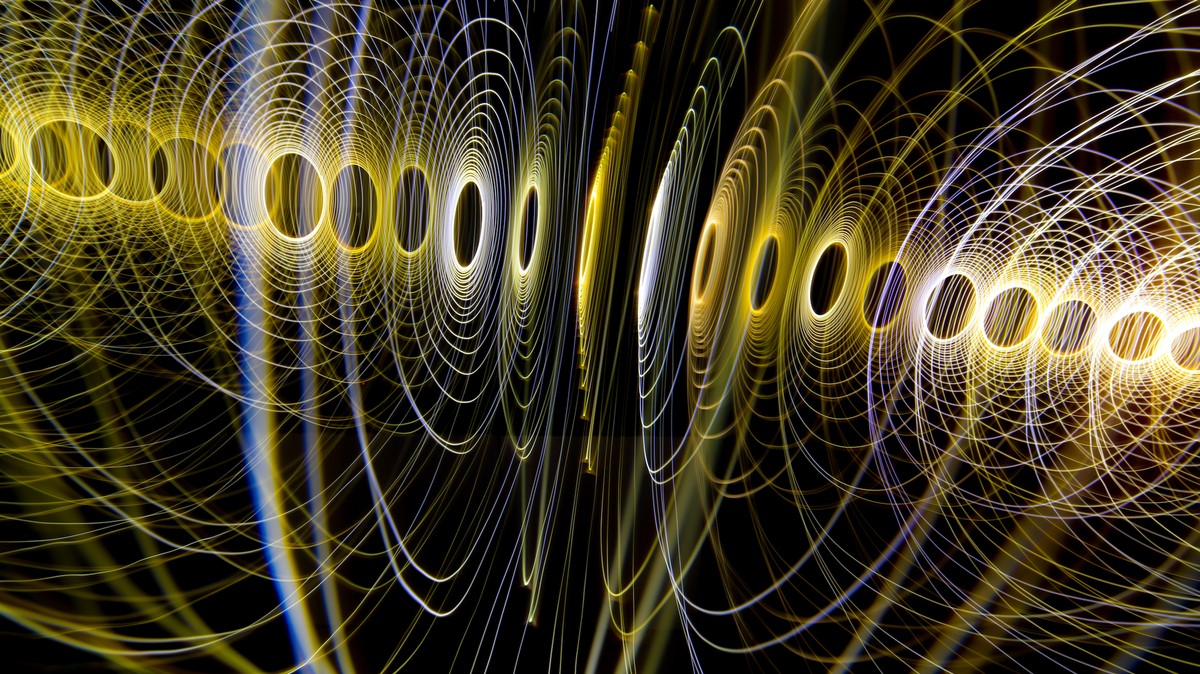
Never-before-obtained observations of a periodic fast radio burst revealed surprising results that have upended expectations.
Scientists have captured unprecedented observations of bizarre signals in space, revealing new insights about why some of these unexplained pulses, known as fast radio bursts (FRBs), appear to flash in clear periodic patterns.
First detected in 2007, FRBs are extremely bright radio pulses that erupt for a fraction of a second, but can still be observed across billions of light years, suggesting that they are powered by highly energetic sources. Some FRBs are one-offs that seem to only flash a single signal, while others are “repeaters” that produce multiple pulses.
It gets weirder: two of those repeaters show periodicity in their pulses, meaning that they have distinct active and dormant phases. Some scientists have proposed that this periodicity is caused by FRB sources located in messy environments that are clouded with supernova debris or wind-swept gas from companion stars. This stellar material could intermittently block radio signals from our perspective on Earth, creating the active and dormant phases, or so this hypothesis suggests.
In other words, the regular cycles of some repeater signals may be caused by environmental factors rather than some characteristic of the source itself. Now, however, a new study has ruled this explanation out.
Scientists led by Inés Pastor-Marazuela, a PhD student at the University of Amsterdam’s Anton Pannekoek Institute of Astronomy, have captured never-before-achieved observations of a periodic repeater known as FRB 20180916B, with the help of two advanced instruments: the Westerbork Synthesis Radio Telescope/Apertif and the Low Frequency Array (LOFAR). Whereas past studies have probed FRBs down to radio frequencies of 300 MHz, LOFAR detected frequencies as low as 150 MHz from the periodic repeater, which correspond to very long wavelengths measuring three meters (ten feet). This exceptionally deep look at FRB 20180916B revealed unexpected insights that “strongly disfavor” the idea that messy environments cause periodicity in FRBs, according to a study published on Wednesday in Nature.
“Low frequency radio waves have trouble escaping from dense nebular environments such as the remnants of stellar explosions,” said Joeri van Leeuwen, a radio astronomer at the Netherlands Institute for Radio Astronomy (ASTRON) who co-authored the study, in an email.
“So, we were aiming to try and detect such low-frequency waves from an FRB, because that would rule out [the idea that] FRBs are emitted by, for example, neutron stars that were only just formed in a supernova, and still shrouded by material from the explosion,” he continued. “It would also rule out that, for example, a dense stellar wind continuously eclipses the FRB at low frequencies.”
Many scientists have tried to detect FRBs at such low frequencies, but this study offers the first successful attempt to capture them. The team snagged the exceptional observations by monitoring several cycles of FRB 20180916B, which exhibits a 16-day pattern: an active bursting period of four days, followed by a dormant period lasting 12 days. The Westerbork/Apertif facility observed this cycle for 388 hours at normal radio frequencies, while automatically keeping LOFAR in the loop about its progress.
“We connected two of the biggest radio telescopes in the world to investigate this,” van Leeuwen explained. “Westerbork/Apertif is a very sensitive and new system that works at a frequency we know FRBs emit at. It alerts us every time an FRB goes off.”“We then check very carefully if LOFAR saw this FRB at low frequencies, because none had ever been seen before there,” he added. “Now, these are very competitive and expensive telescopes, so we started with one of the most active FRBs, and one that has also been detected down to medium-low frequencies: FRB 20180916B.”
The researchers were surprised to find that both telescopes observed radio signals, but that they didn’t pick up the same bursts. Westerbork/Apertif observed shorter and more familiar wavelengths, which were followed by delayed bursts of longer wavelengths seen by LOFAR. The results imply that the source of FRB 20180916B is in a “clean” environment, without much stellar debris or interfering winds from a nearby star to block these longer wavelengths from freely traveling across space to Earth.
A more likely source of periodic FRB repeaters, according to the study, is a type of hyper-dense dead star known as a magnetar. A magnetar that emits pulses while it slowly rotates might create the kind of pattern seen in FRB 20180916B, with its active phase caused by an orientation toward Earth and its dormant phase correlated to its tilt away from our planet.
“The observations we present actually match slow-spinning isolated magnetar models very well,” van Leeuwen said. “That would mean the source would be spinning much more slowly than any other known neutron star though, an idea that will require some getting used to. We are clearly getting closer, but the puzzle is certainly not solved yet. I expect that from our measurements a wealth of new, better models will spring.”
To that end, the researchers plan to use these two sophisticated telescopes to observe other repeating FRBs. Future low-frequency surveys could shed more light into the mysterious sources of FRBs, which may be caused by many different phenomena, and they may also reveal much broader insights about our universe.
“Now that we know FRBs can live in clean environments, we can use them more reliably as beacons in space that allow us to map the atoms in our Universe (about half of which are missing when using other methods),” van Leeuwen concluded. “Such cosmology is an exciting prospect for us, on a slightly longer timescale.”
Becky Ferreira
No comments:
Post a Comment
Note: Only a member of this blog may post a comment.